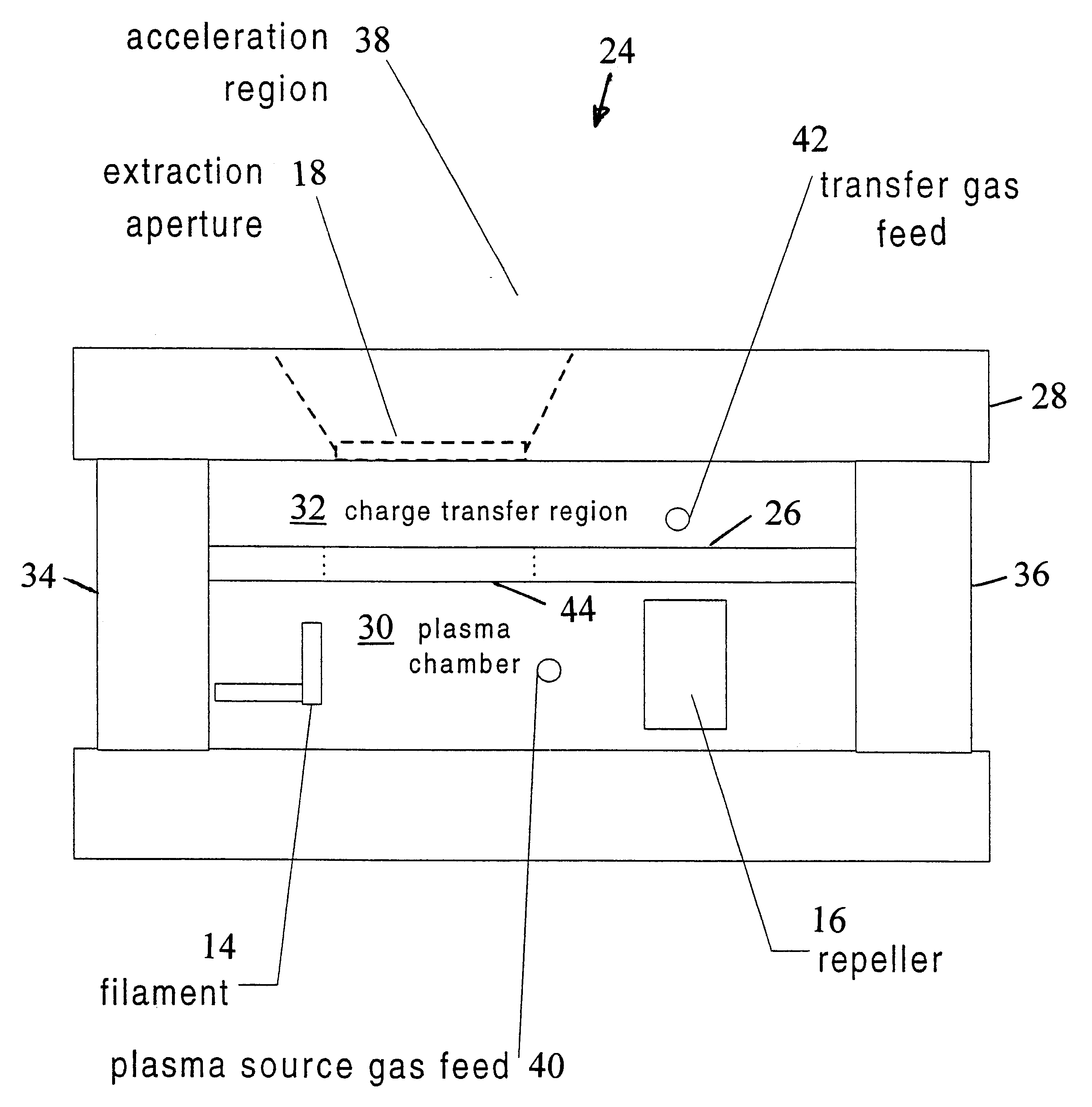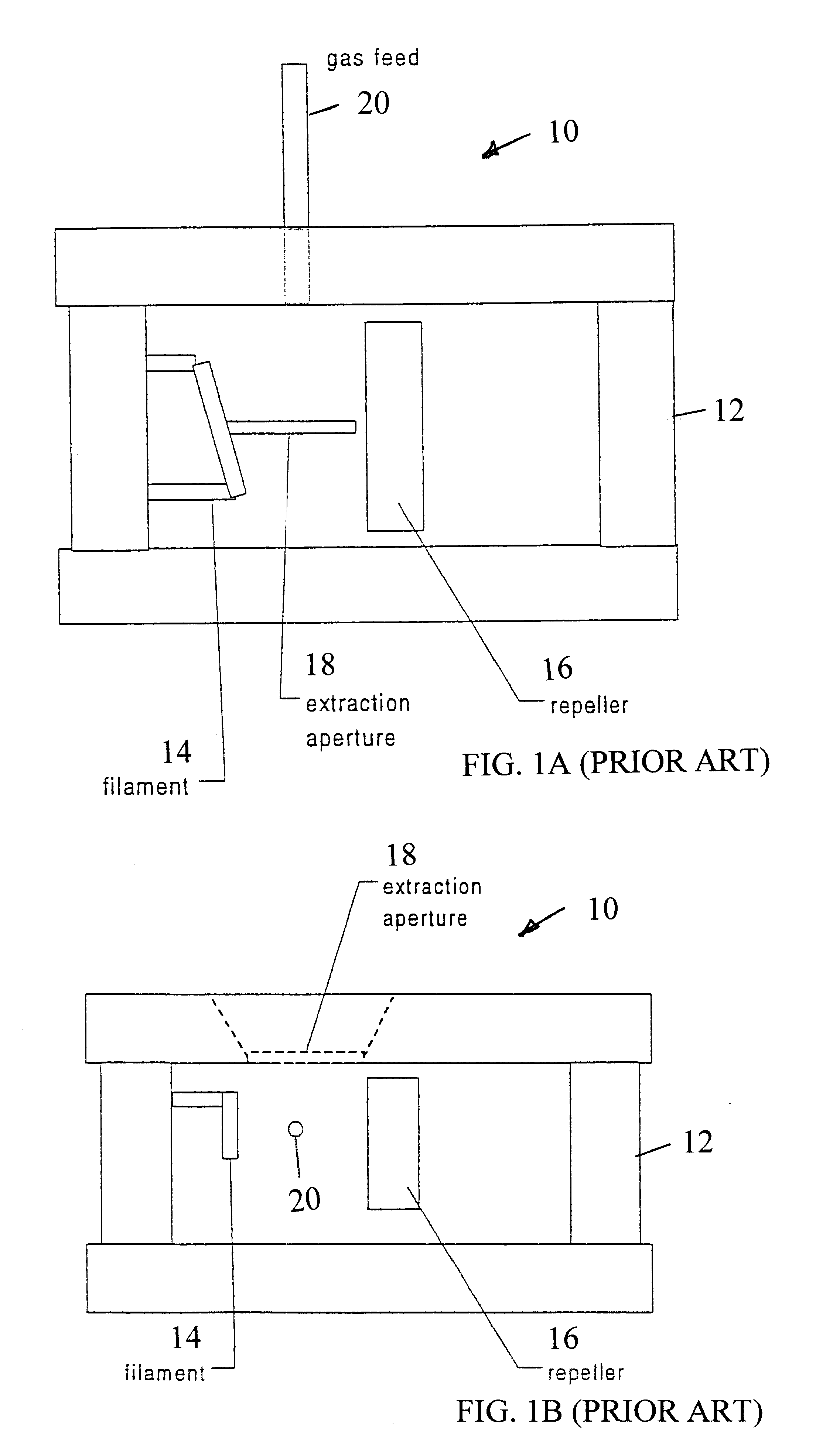Charge exchange molecular ion source
a charge exchange and molecular ion source technology, applied in the field of ion sources and to charge transfer, can solve the problems of difficult characterization of the net effect of source performance, low energy of resonance-like charge transfer, and inability to achieve charge exchange, etc., and achieve the effect of reducing nucleon energy
- Summary
- Abstract
- Description
- Claims
- Application Information
AI Technical Summary
Problems solved by technology
Method used
Image
Examples
Embodiment Construction
The general process of the invention is to produce a resonant charge exchange between an ion A.sup.+ and a neutral heavy molecule, MOL:
The heavy molecules are ionized by charge exchange with the ions A.sup.+. The ions A.sup.+ are first created in a separate chamber, the plasma chamber, of the ion source. The charge transfer rate may be enhanced if at least one of the constituent elements of the molecule can be conveniently ionized. A simple aperture between the chambers allows ions A.sup.+ to flow into a second chamber, the charge transfer chamber, of the ion source. As a result of charge exchange, molecular ions are produced. Some of the MOL.sup.+ products will fall into an extraction aperture of the ion source and be accelerated. The MOL.sup.+ beam current forms the output of the ion source.
One preferred method is to use constituent ions of the molecules for the charge exchange reaction, because some light molecules are known to exhibit resonant cross sections. However, ions of no...
PUM
 Login to View More
Login to View More Abstract
Description
Claims
Application Information
 Login to View More
Login to View More - R&D
- Intellectual Property
- Life Sciences
- Materials
- Tech Scout
- Unparalleled Data Quality
- Higher Quality Content
- 60% Fewer Hallucinations
Browse by: Latest US Patents, China's latest patents, Technical Efficacy Thesaurus, Application Domain, Technology Topic, Popular Technical Reports.
© 2025 PatSnap. All rights reserved.Legal|Privacy policy|Modern Slavery Act Transparency Statement|Sitemap|About US| Contact US: help@patsnap.com



